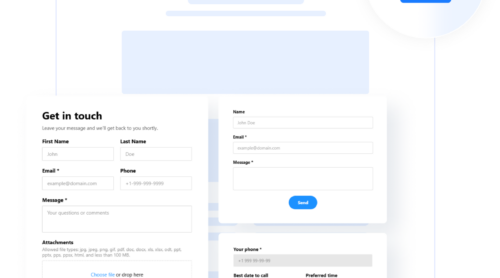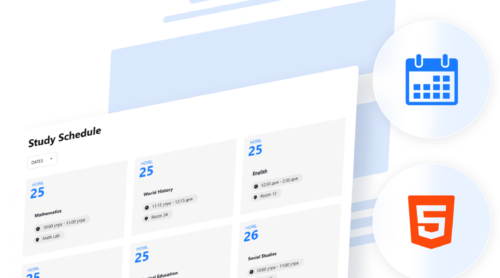Choosing the Best AI Blog Builders for Article
AI is changing how we approach blog writing, helping to create content faster, improve quality, and capture readers’ attention more effectively. The AI content generation market is also growing, offering more and more solutions. I’ll look at several AI tools, each tested specifically for this article or regularly used by content managers like me, to show how they can make the process of crafting engaging content smoother and more efficient.
So, what did the tools need to do to get into this research?
- Functionality. Tools that support your specific needs, like content generation, SEO, or editing.
- Ease of use. Tools that integrate well with your workflow and have a user-friendly interface.
- Customizability. Tools that allow brand-specific adjustments and can scale as your content needs grow.
Top 7 AI Blog Writing Solutions
AI can do more than just speed up content creation; it can refine, optimize, and even inspire new ideas for your blog. From generating outlines and headlines to enhancing readability and SEO, AI tools bring efficiency and creativity into every writing stage. Let’s look at the top seven AI tools that content creators rely on to elevate their blogging game.
#1 ChatGPT
Concept and workflow. ChatGPT is an AI-driven writing assistant designed to streamline and elevate the blog-writing process. Writers and content managers can use it as a creative brainstorming partner, idea generator, or even a tool for drafting and refining content. With simple prompts, ChatGPT adapts its responses to meet specific content needs, helping users create unique and engaging blogs quickly.
Features and benefits:
- Content structure suggestions
- Tone adjustments
- Keyword integration for SEO
- Human-like style that resonates with readers
- Generating topic ideas, headlines, and CTAs
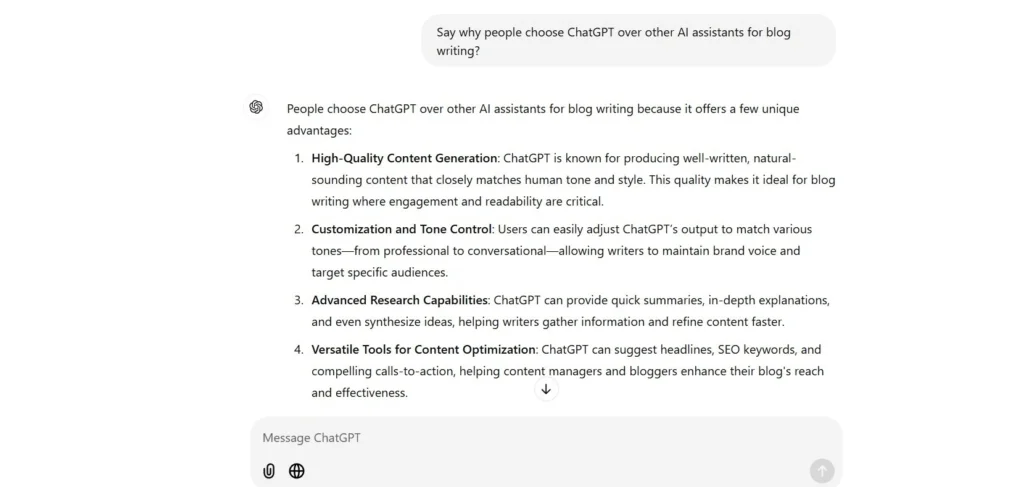
#2 Elfsight Blog widget
Concept and workflow. The Blog widget by Elfsight enables users to create, manage, and display blog posts effortlessly, enhancing content strategy and audience engagement. The widget’s intuitive interface allows for quick setup and customization, ensuring your blog aligns with your website’s design and branding.
Features and benefits:
- AI-powered blog post generation
- Intuitive editor
- Posts with multimedia elements
- Customizable layouts and design options
- Each post is assigned a unique URL
#3 GravityWrite
Concept and workflow. GravityWrite is an AI-powered writing assistant designed to streamline content creation across various platforms, including blogs, social media, and marketing materials. By leveraging advanced natural language processing, it enables users to generate high-quality, engaging content efficiently. The platform offers a user-friendly interface where users input their desired topic or keywords, and GravityWrite produces well-structured content tailored to specific needs.
Features and benefits:
- More than 250 AI templates
- SEO-optimized, long-form content
- In-depth outlines
- Extensive web research
- AI-generated images
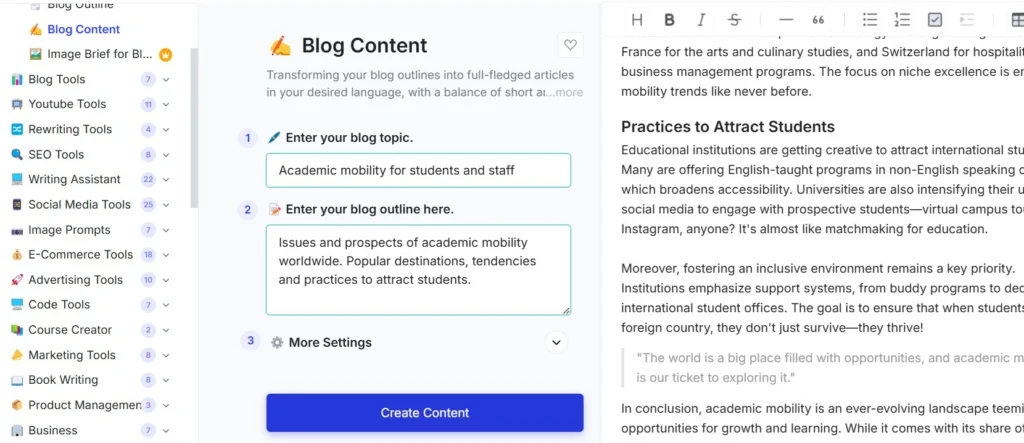
#4 Buffer
Concept and workflow. Buffer’s AI Assistant is designed to streamline social media content creation directly within the Buffer platform, allowing users to generate, refine, and schedule posts without switching between apps. This integration eliminates the need for copy-pasting across multiple social networks, making it especially useful for cross-posting. With a deep understanding of platform nuances, Buffer’s AI adjusts content according to each social network’s style — keeping it concise for X, professional for LinkedIn, and playful for Instagram.
Features and benefits:
- Powerful customization with rephrasing, shortening, expanding, and tone-adjustment buttons
- Precise control over language and tone, helping brands achieve the perfect voice for each platform
- Prevents errors by automatically aligning with platform constraints, like character limits

#5 NeuronWriter
Concept and workflow. NeuronWriter is an AI-driven content optimization platform designed to enhance website content for improved search engine rankings. By integrating semantic models (NLP), Google SERP analysis, and competitor data, it assists users in planning, writing, and optimizing content with user intent in mind. The platform offers a streamlined workflow that includes generating article drafts, analyzing top-ranking competitors, and providing NLP-based recommendations to ensure content aligns with current SEO best practices.
Features and benefits:
- Advanced content editor with NLP-based term suggestions
- Draft generator for quick article structuring
- Content scoring system to monitor optimization levels
- AI writing capabilities
- Plagiarism checker
- Internal linking suggestions
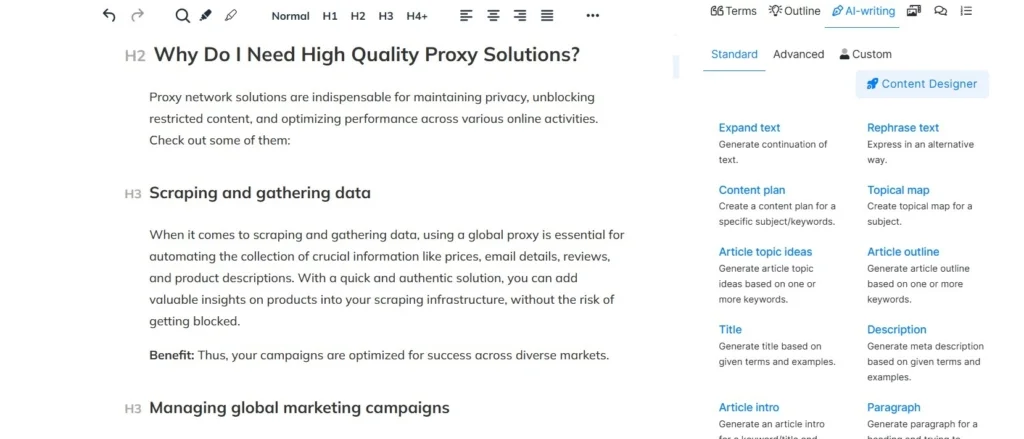
#6 Frase
Concept and workflow. Slightly similar in interface with the previous option, Frase is an AI-powered content optimization platform designed to streamline the creation of SEO-friendly content. It assists users in researching, outlining, writing, and optimizing articles by analyzing top search results and providing data-driven insights. By integrating AI-driven research and writing tools, Frase enables content creators to produce well-structured, high-quality content that aligns with user intent and search engine requirements.
Features and benefits:
- SEO-optimized drafts
- Competitive analysis and keyword suggestions
- Content optimization tools
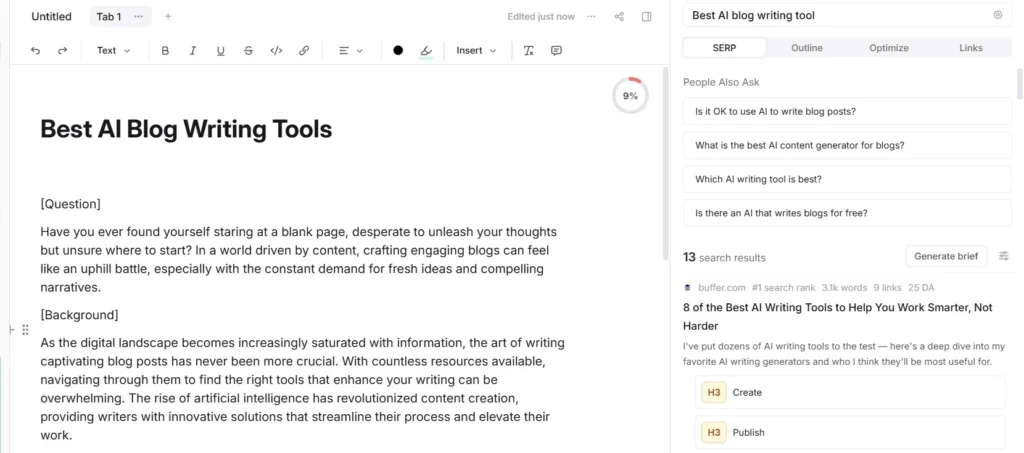
#7 Craiyon
Concept and workflow. Craiyon is a free AI image generator that transforms text prompts into unique images. Users simply input a description, and Craiyon produces nine distinct images within seconds. The platform offers various styles, including photo, drawing, and vector, allowing for diverse artistic expressions. An “Expert Mode” enables users to refine outputs by specifying elements to exclude, enhancing customization.
Features and benefits:
- Ability to generate images without requiring user accounts
- ‘Upscale’ option to enhance image resolution

Conclusion
In our analysis, we explored a range of tools tailored to enhance specific aspects of content creation, from SEO-driven writing to social media content planning, blog building, and image generation. Each tool was evaluated for its relevance in areas such as optimizing for search engines, crafting engaging social media posts, building visually appealing blogs, and generating custom visuals—all critical elements for impactful digital content.
We hope that among the tools listed, you’ll find solutions that align with your content goals, empowering you to elevate your writing, increase engagement, and achieve a higher level of creative output. Whether you’re focused on improving SEO, streamlining social media planning, or adding visual flair, these tools offer effective ways to upgrade your content strategy. One last advice is don’t go all-in with your AI content strategy if you want your blog to survive in the age of AI writing.




